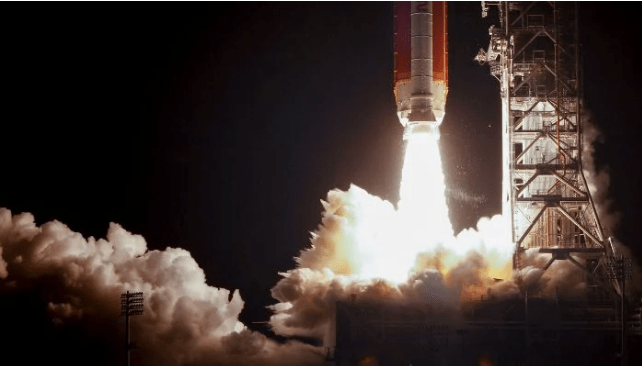Orion is “exceeding performance expectations” three days after departing Florida for the Moon, according to NASA officials on Friday.
The spacecraft will soon transport astronauts to the Moon, the first people to do so since the final Apollo mission in 1972. The purpose of this maiden test flight without a crew is to make sure the vehicle is secure.
Mike Sarafin, director of the Artemis 1 mission, stated at the meeting to examine the performance of the Orion spacecraft, “It is exceeding performance expectations.”
According to Jim Geffre, the Orion manager at the Johnson Space Center in Houston, the spacecraft’s four roughly 13-foot (four-meter) long solar panels deployed correctly and are producing more energy than anticipated.
The spacecraft is being operated from that Texas control centre. Orion is getting ready to launch the first of the mission’s four main thrusts while already being about 200,000 miles (320,000 km) away from Earth.
To take use of the Moon’s gravitational pull, this manoeuvre, which will happen early on Monday morning, will bring the spacecraft as close as 80 miles (130 kilometres) from the lunar surface.
NASA anticipates losing contact with the spacecraft for about 35 minutes because this will occur on the far side of the Moon. Despite the fact that they will be in complete darkness, flight director Jeff Radigan announced that they will be passed over. NASA will broadcast video of the flyover. After another engine drive four days later, Orion will be in a far-off orbit around the Moon. A record for a habitable capsule, the spacecraft will travel up to 40,000 miles beyond the Moon.
After around 25 days of flight, it will start its return trip to Earth, with a landing in the Pacific Ocean planned for December 11. If this mission is a success, it will set the stage for Artemis 2, which will fly astronauts around the Moon without a landing, and Artemis 3, which would eventually bring people back to the lunar surface.
The dates for those missions are 2024 and 2025, respectively. Ten research micro-satellites had been launched when the rocket lifted off, according to Sarafin, who also stated on Friday, but half of them were having communication or technical issues. The primary mission won’t be impacted by those experiments, which were conducted independently by distinct teams.



Comments are closed.